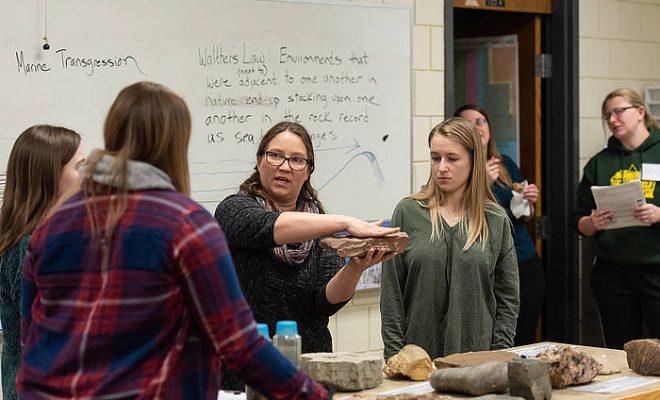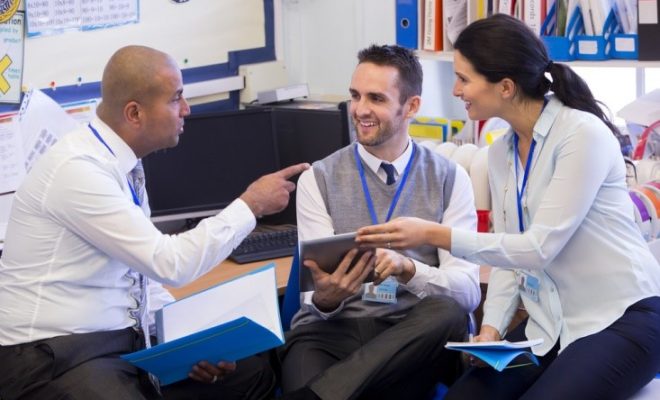3 Easy Steps to Using a Collaboration Technology Approach

No teacher can do it all.
Running a classroom, delivering instruction, and giving timely feedback are huge tasks by themselves. The good news is that responsibility for learning doesn’t have to fall solely on the teacher’s shoulders. This responsibility can be shared with students through collaborative technology. In fact, the outcomes are better if the teacher is willing to adopt collaborative technology in the classroom.
Many teachers have already adopted a collaborative technology approach in their classrooms. They’ve been willing to step away from center stage and let their students take on more responsibility for their learning.
You can bring collaborative technology into your classroom if you are willing to help your students envision, explore, and enrich.
Envision
With any lesson, establishing objectives and goals come first. You know what your students need to learn to satisfy curriculum requirements, but your students also should be involved in goal setting when using collaborative technology.
Students who can articulate what they must achieve as the result of their collaboration are more likely to complete their tasks. Working together encourages students of every ability not only to communicate well but to seek ways to cooperate with each other.
Explore
Exploration takes time. Students need plenty of opportunities to pause, reflect, and evaluate. As frustrating as it may be to allow ample time for this process, collaborative technology actually shortens the time spent doing other tasks related to the learning.
Groupware tools like Padlet and Flipware make collaborative technology easy and efficient. When students spend less time on administrative tasks, they can spend more time on exploration.
Enrich
Learning is always more effective when shared with others. Your students probably have one of the most powerful tools for this, right at their fingertips. It’s their smartphone, and they can use their digital devices to share and comment on posts about learning.
Sending out information about learning discoveries can be exciting, especially when others comment on the findings. The enthusiasm for the topic encourages students to dig even deeper and have meaningful conversations about their subjects.
To assist in making learning relevant, teach your students about collaborative technology such as:
· Tweets (for observations)
· Posts (for sharing ideas/discoveries)
· Vlogs (for providing documentation/persuading)
If your students don’t have smartphones, consider how you can provide equitable access to technology for everyone in your classroom.
Ultimately, collaboration technology yields impressive benefits. Users are better able to analyze and interpret data. They are likely to be more creative in solving problems. And finally, team members find their relationships with each other to be more satisfying.
Your classroom is just the beginning. Labs and media centers are also prime locations for collaborative learning. Where will it take your students?






